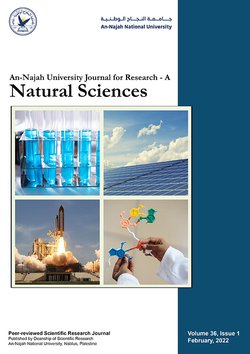The Effect of Capping Condition on the Compressive Strength of Concrete Hollow Blocks
Authors:
Article info
2002-09-18
2003-05-25
2003-05-25
75 - 87
Keywords
Abstract
One of the quality control tests done on the concrete hollow blocks is the compressive strength. In order to simulate in situ strength of the concrete blocks, capping technique was used in order to achieve smooth perpendicular surface for compressive strength test specimens. Cement Capping is one of the most widely used methods in testing compressive strength of concrete hollow blocks. In this research, other types of capping was used in addition to cement-gyps capping that is wood capping by using of plywood plates on the compressive strength specimens. Specimens without any treatment for capping were also tested for comparative analysis. Cases of capping (or no capping) were considered for several types of hollow blocks (variable thickness) of 70,100,150 and 200 mm thickness. The results showed that no significant effect of the specimens size on the ratio of compressive strength between no-capping and cement-gyps capping, no-capping and plywood capping, and cement-gyps and plywood capping. The ratio of compressive strength between the cement-gyps and no-capping are approximately equal to the ratio between plywood and no-capping. The correlation established for compressive strength for Cement-gyps capping, and plywood capping was recommended for use interchangeably. Keywords: concert hollow blocks, compressive strength, capping type, cement-gyps capping, plywood capping.
Abaza, O. A., & Abu Salameh, A. (2003). The Effect of Capping Condition on the Compressive Strength of Concrete Hollow Blocks. An-Najah University Journal for Research - A (Natural Sciences), 17(1), 75–87. https://doi.org/10.35552/anujr.a.17.1.646
[1]O. A. Abaza and A. Abu Salameh, “The Effect of Capping Condition on the Compressive Strength of Concrete Hollow Blocks,” An-Najah University Journal for Research - A (Natural Sciences), vol. 17, no. 1, pp. 75–87, May 2003, doi: 10.35552/anujr.a.17.1.646.
Abaza, Osama A., and Ameed Abu Salameh. “The Effect of Capping Condition on the Compressive Strength of Concrete Hollow Blocks.” An-Najah University Journal for Research - A (Natural Sciences), vol. 17, no. 1, May 2003, pp. 75–87. Crossref, https://doi.org/10.35552/anujr.a.17.1.646.
1.Abaza OA, Abu Salameh A. The Effect of Capping Condition on the Compressive Strength of Concrete Hollow Blocks. An-Najah University Journal for Research - A (Natural Sciences) [Internet]. 2003 May;17(1):75–87. Available from: http://dx.doi.org/10.35552/anujr.a.17.1.646
Abaza, Osama A., and Ameed Abu Salameh. “The Effect of Capping Condition on the Compressive Strength of Concrete Hollow Blocks.” An-Najah University Journal for Research - A (Natural Sciences) 17, no. 1 (May 2003): 75–87. https://doi.org/10.35552/anujr.a.17.1.646.
تأثير نوع التغطية للطوب المفرغ على قوة الضغط المحوري
المؤلفون:
معلومات المقال
2002-09-18
2003-05-25
2003-05-25
75 - 87
الكلمات الإفتتاحية
الملخص
يعتبر فحص قوة الضغط المحوري واحداً من أهم الفحوصات على الطوب المفرغ، ومن منطلق فحص الطوب بصورة ناجحة حسب وضعية استخدامها في الواقع فقد تم اللجوء إلى استخدام التغطية لإعطاء سطح مصقول ومتعامد مع ارتفاع العينة. أسلوب التغطية مستخدم في كثير من المواصفات العالمية وعليه فقد تم استخدام خليط الإسمنت والجبص في هذا البحث بالإضافة لاستخدام ألواح الساندويتش الخشبية في فحص الضغط المحوري للطوب المفرغ. بالإضافة لذلك فقد تم فحص الطوب المفرغ بدون استخدام أي تغطية. لحالات التغطية أو عدمها أعلاه، فقد تم فحص عدة أنواع من الطوب بسماكة 70 و100 و150 و200مم. النتائج أظهرت أنه لا يوجد تأثير مباشر ناتج عن عرض الطوب على نسبة الضغط المحوري بدون تغطيته، وتغطية باستخدام خليط الإسمنت والجبص وكذلك نفس النسق تكرر في كل من عدم التغطية وتغطيته باستخدام ألواح الخشب وخليط الإسمنت والجبص وألواح الخشب. أما نسبة الضغط المحوري بين تغطية خليط الإسمنت والجبص وبدون تغطيته فقد كانت تقريباً مساوية لنسبة تغطية ألواح الخشب وبدون تغطية. العلاقة التي تم استنتاجها لقيمة الضغط المحوري الناتج من استخدام تغطية خليط الإسمنت والجبص وتغطية ألواح الخشب. فقد تم التوجه باستخدامها في حالة الفحص في أي من النوعين بصورة متبادلة.
Abaza, O. A., & Abu Salameh, A. (2003). The Effect of Capping Condition on the Compressive Strength of Concrete Hollow Blocks. An-Najah University Journal for Research - A (Natural Sciences), 17(1), 75–87. https://doi.org/10.35552/anujr.a.17.1.646
[1]O. A. Abaza and A. Abu Salameh, “The Effect of Capping Condition on the Compressive Strength of Concrete Hollow Blocks,” An-Najah University Journal for Research - A (Natural Sciences), vol. 17, no. 1, pp. 75–87, May 2003, doi: 10.35552/anujr.a.17.1.646.
Abaza, Osama A., and Ameed Abu Salameh. “The Effect of Capping Condition on the Compressive Strength of Concrete Hollow Blocks.” An-Najah University Journal for Research - A (Natural Sciences), vol. 17, no. 1, May 2003, pp. 75–87. Crossref, https://doi.org/10.35552/anujr.a.17.1.646.
1.Abaza OA, Abu Salameh A. The Effect of Capping Condition on the Compressive Strength of Concrete Hollow Blocks. An-Najah University Journal for Research - A (Natural Sciences) [Internet]. 2003 May;17(1):75–87. Available from: http://dx.doi.org/10.35552/anujr.a.17.1.646
Abaza, Osama A., and Ameed Abu Salameh. “The Effect of Capping Condition on the Compressive Strength of Concrete Hollow Blocks.” An-Najah University Journal for Research - A (Natural Sciences) 17, no. 1 (May 2003): 75–87. https://doi.org/10.35552/anujr.a.17.1.646.
An-Najah National University
Nablus, Palestine
Nablus, Palestine
- P.O. Box
- 7, 707
- Fax
- (970)(9)2345982
- Tel.
- (970)(9)2345560
- (970)(9)2345113/5/6/7-Ext. 2628
- [email protected]
- EIC
- Prof. Ismail Warad
An-Najah University Journal for Research - A (Natural Sciences) by An-Najah University, Nablus, Palestine is licensed under CC BY-NC 4.0
